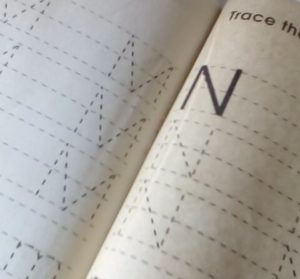 What is Dysgraphia?
What is Dysgraphia?
Dysgraphia is the inability to write clearly which is also a symptom of brain disease. A child with dysgraphia has difficulty with spelling, poor handwriting and trouble putting thoughts on paper. It is a neurological disorder that appears when children are first learning to write. The brain has difficulty retrieving information from memory about how to organize thoughts for writing. Children with dysgraphia are not lazy and unintelligent. They just have struggle with written expression. Also these children may have trouble in areas such as visual-spatial, language processing, fine motors, spelling, grammar, handwriting and organization of written language.
What are the signs of dysgraphia?
The signs of dysgraphia are the following:
- Unreadable writing or messy handwriting
- Has difficulty organizing thought on paper
- Cannot get thoughts down on paper
- Has difficulty with shape discrimination and letter spacing
- Uneven position of letters on the page with respect to lines and margins
- Inconsistent spaces between words and letters
- Spells words incorrectly and mixes upper and lower case letters
- Does not write in complete sentence
- Has difficulty telling stories
- Do not know the important facts and details of the story
- Problems with fine motor tasks such as picking up objects, fastening buttons and tying shoes
How to identify dysgraphia?
Psychologist may use a series of tests to know if a person has language based dysgraphia while the occupational therapist identify problems with mechanical based dysgraphia or apraxia.
What are the treatments for children with dysgraphia?
Early treatment may help to prevent or reduce signs of dysgraphia. The following are some ways to help children with dysgraphia.
- You can use different pens or pencils that are more comfortable
- Use a paper with raised lines so that a child may write within the lines
- Incorporate activities that strengthen the hands, wrists, fingers and elbows for writing
- Allow your child to practice writing numbers and letters in the air to improve working memory
- Have a warm up exercise with the hands and fingers before doing a writing assignment
- Exercise like squeezing a ball or playing with a clay can strengthen hand muscle
- Get help with a professionals like occupational therapist or pediatric therapist and educational therapist
